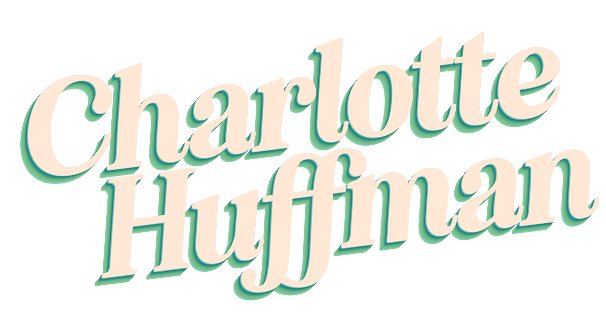
New Hire Navigator
A custom GPT that supports new hires with real-time answers to onboarding questions—designed to reduce confusion and build confidence from day one.
New Hire Navigator is a custom-built GPT that supports employees during their first 90 days at Altura Solutions, a fictional SaaS company that serves nonprofits. This performance support tool answers real-time questions about onboarding, tools, policies, and workplace norms in a warm, approachable voice—reducing confusion and boosting confidence for new hires as they settle into their roles.
Unlike traditional onboarding documents or one-size-fits-all LMS courses, this tool meets learners where they are—right when they need help.
Audience:
New employees at Altura Solutions navigating their first 90 days in a hybrid workplace.
My Role:
Instructional Design
Prompt Engineering
Knowledge Base Development
UX Writing
Visual Design
Tools:
Custom GPT Builder
Notion
Figma
Google Docs
Canva
The Problem
Altura Solutions had a familiar challenge: new hires felt overwhelmed during onboarding. The necessary information existed—in slide decks, PDFs, and scattered emails—but it wasn’t accessible when employees needed it. Many new hires hesitated to ask “simple” questions, which led to mistakes, missed deadlines, and slower ramp-up times.
Altura needed a way to reduce this friction while creating a sense of psychological safety and autonomy.
The Solution
I created New Hire Navigator, a custom GPT that acts like a friendly, knowledgeable peer. It provides plain-language, real-time answers to common onboarding questions like:
“How do I log PTO?”
“What should I wear for client calls?”
“Do I have to keep my camera on?”
“When do my benefits start?”
The GPT was trained on a custom-built knowledge base, written in accessible language and designed to reflect Altura’s culture and tools. In addition to answering questions, it encourages next steps, shares contextual coaching, and normalizes the learning curve—all in under 150 words per response.
My Process
I led the full design and development process for this project—from defining learner needs to building the GPT and supporting assets. Each step focused on creating a helpful, human-centered experience that empowers new hires to find answers and feel confident in their first weeks.
Step 1:
Discovery + Content Strategy
I outlined the onboarding journey for Altura’s fictional employees, identifying the highest-friction points using user personas and workplace scenarios. I interviewed HR leaders (real) to simulate realistic documentation and define what mattered most in a new hire’s first 90 days.
As part of this phase, I also defined the business goal for the project: Within 3 months of launch, increase new hire self-sufficiency by 30%, measured by successful task completion and reduced need for follow-up, through consistent use of the New Hire Navigator GPT during onboarding.
Step 2:
Knowledge Base Design
I created a structured reference guide to train the GPT, breaking down long HR documents into clear, scannable sections on tools, policies, benefits, and culture. This reference was written in plain English, designed to reflect Altura’s human-centered tone, and formatted for easy updates.
In addition to the backend reference, I developed a fictional Employee Handbook that mirrors the GPT’s language and tone, allowing it to serve as both a readable document for new hires and a training source for the GPT itself. This dual-purpose approach ensured consistency between written materials and conversational responses.
Step 3:
Instruction Configuration
I crafted detailed GPT instructions, including guidelines on tone, rules for setting boundaries (e.g., when not to answer a question), and graceful fallbacks when the GPT lacks information. I also trained it to handle rudeness professionally, redirect questions outside its scope, and encourage autonomy with positive reinforcement.
Now that the GPT is live and supporting new hires, the next phase is expanding how and where it can be integrated into the full onboarding experience. One potential next step is embedding the New Hire Navigator into an Articulate Rise or Storyline onboarding module, offering learners a seamless way to ask questions while progressing through required training.
Other ideas include adding a browser-accessible version to a company intranet, creating data tracking around usage and impact, or designing a short feedback loop for learners to rate the usefulness of GPT responses. These next steps would ensure the tool remains both relevant and measurable while continuing to improve new hire confidence, autonomy, and satisfaction.
Within 3 months of launch, increase new hire self-sufficiency by 30%, measured by successful task completion and reduced need for follow-up, through consistent use of the New Hire Navigator GPT during onboarding.
Step 4:
Conversation Flow Design
To make the GPT feel approachable, I added a warm welcome message and helpful conversation starters like:
“What should I expect on my first day?”
“Where do I find the onboarding checklist?”
I also built micro-coaching logic into responses: when users asked basic questions, the GPT reinforced that it was totally normal and even smart to ask early.
Next Steps:
Takeaways
This project demonstrates how AI-powered tools can extend instructional design beyond courses—into the realm of workflow support and learner empowerment. It showcases my ability to combine performance support strategy, inclusive writing, knowledge architecture, and emerging technology to solve real workplace problems.
It also reinforces my belief that onboarding should never be about “just getting through it”—it should help people feel welcome, seen, and set up to thrive.




